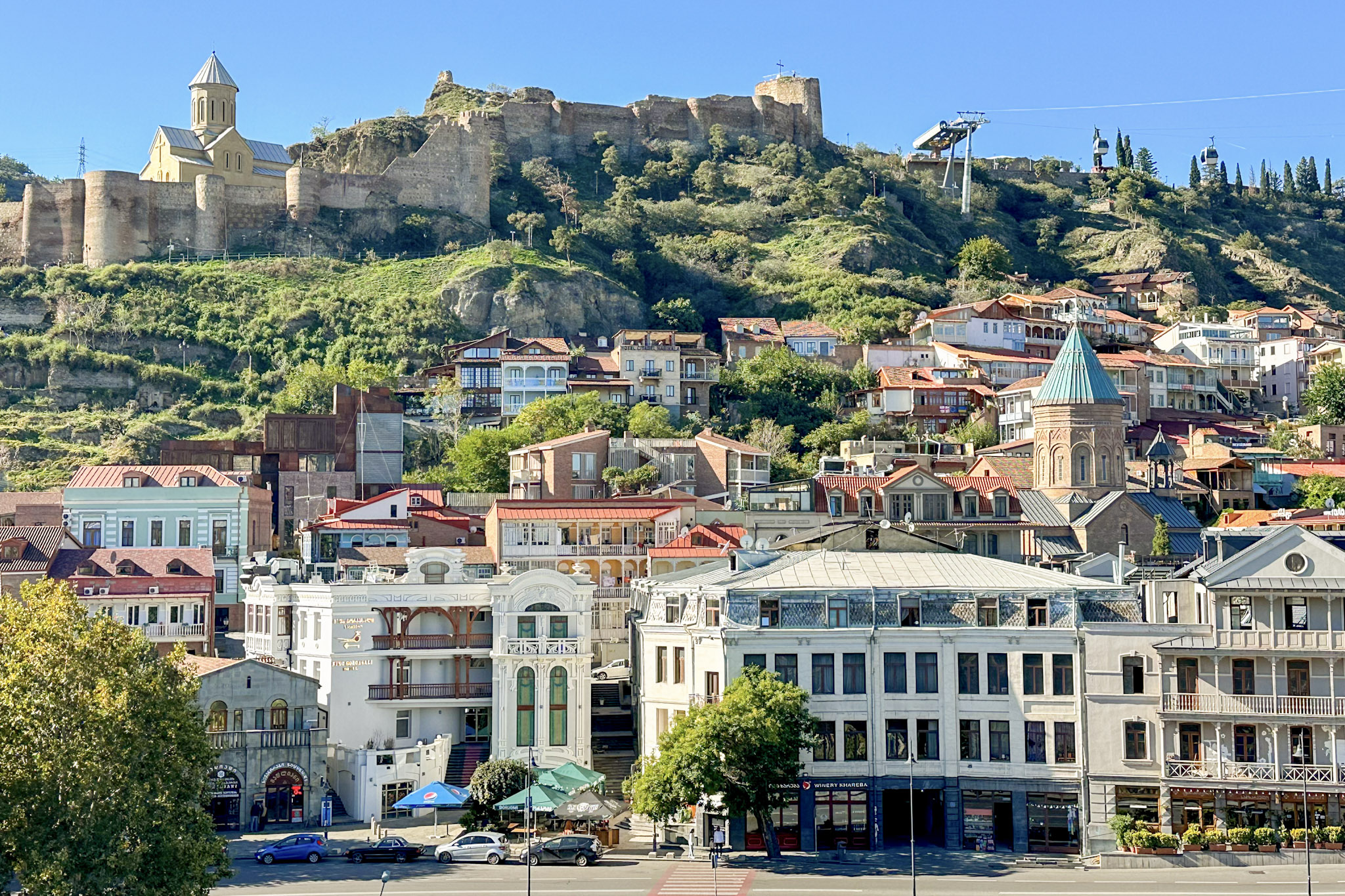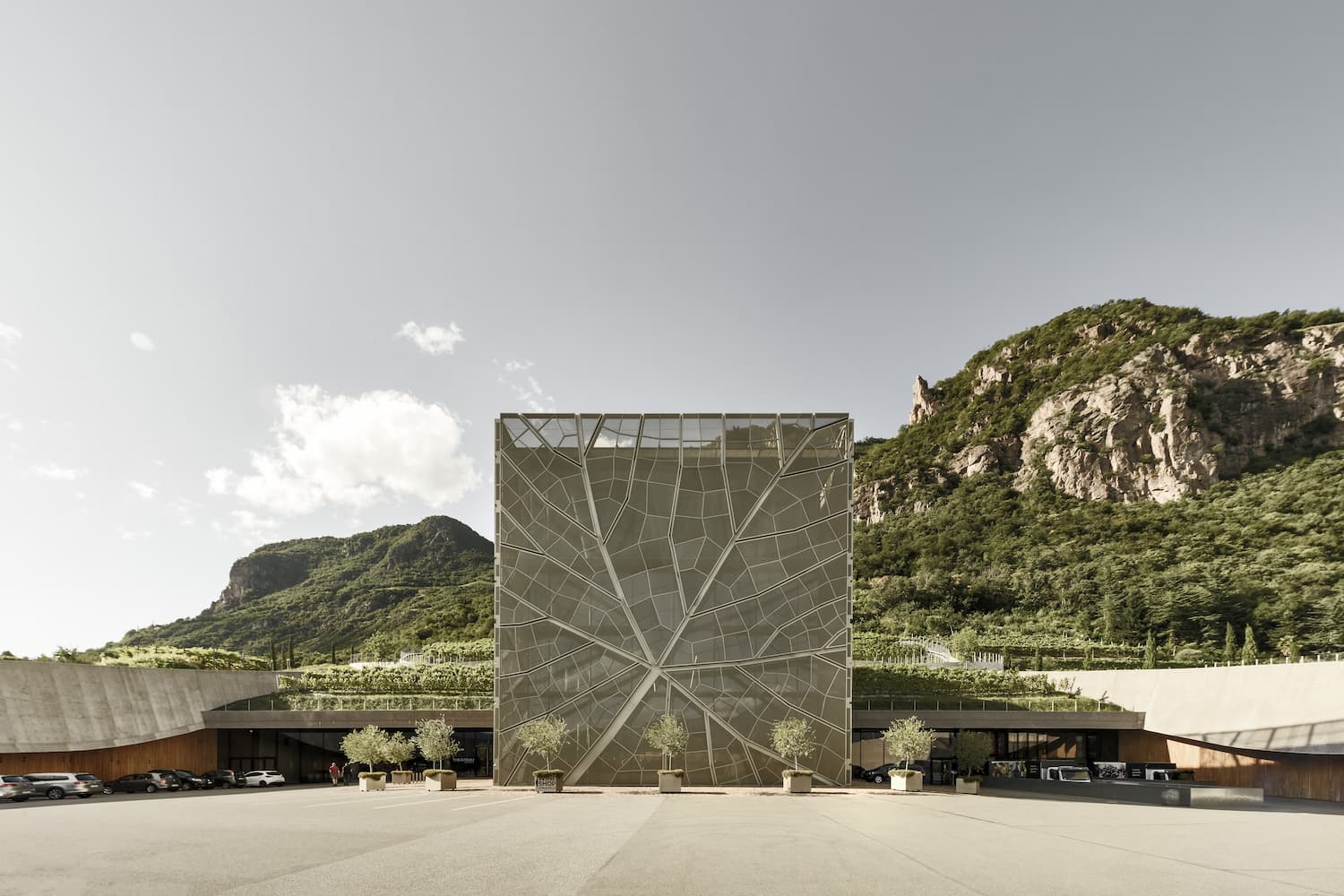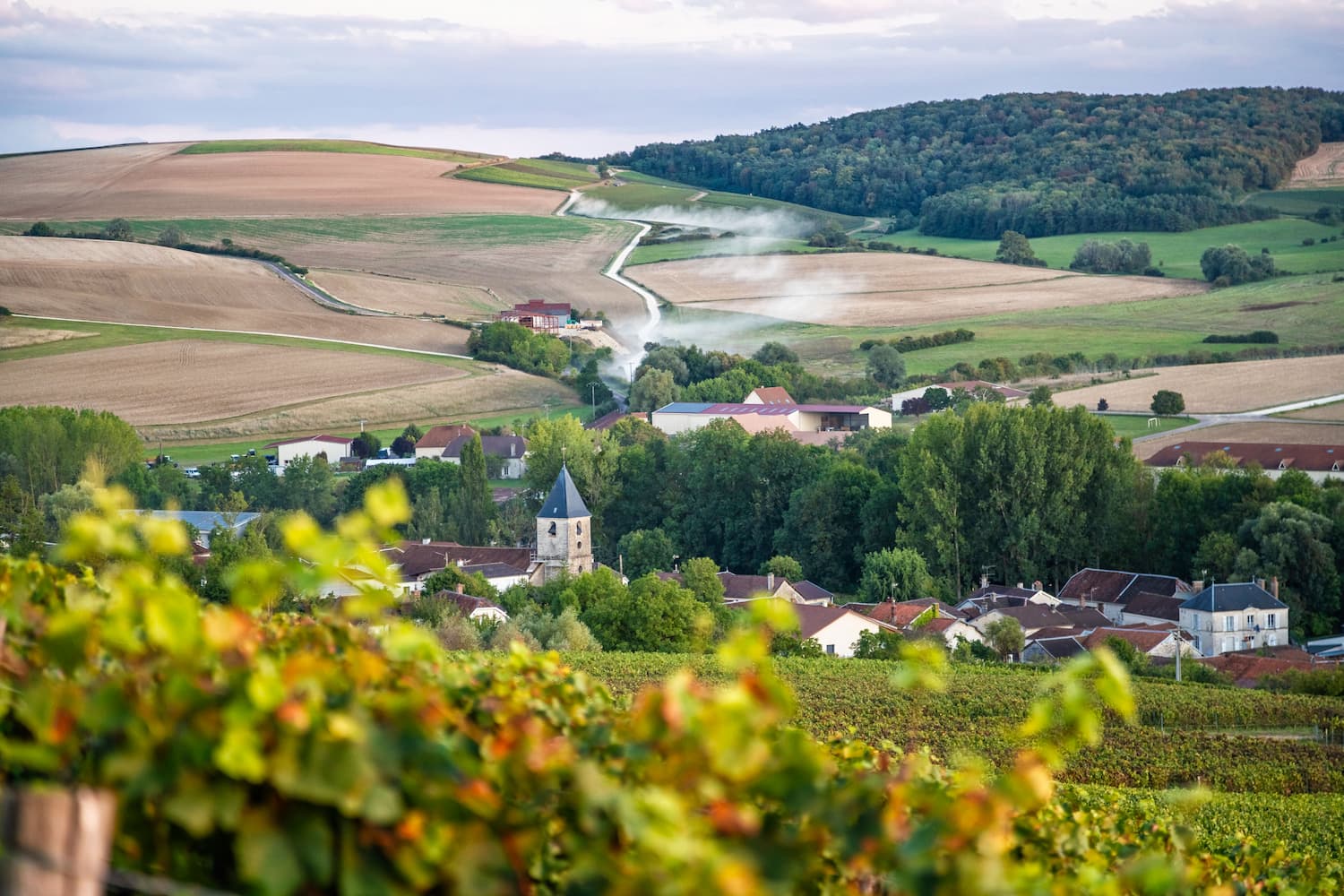North Stars:

Community Support

Heritage Value

Waste Management
“The murals are among Georgia’s rarest, created during an era when Byzantine iconoclasm was erasing sacred imagery elsewhere.”
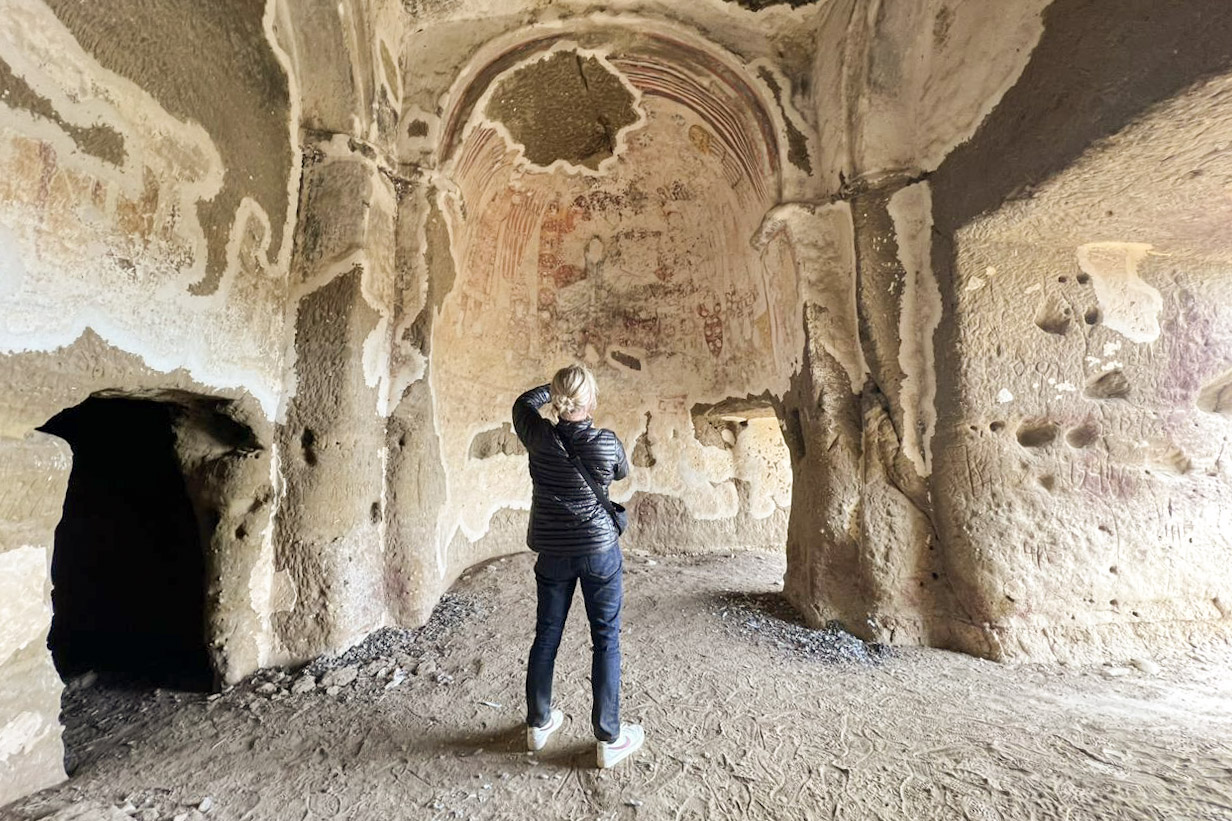
Lauren shooting photos of frescoes. Courtesy of Living Roots.
The climb was short but steep, the sandstone warm under my palms, loose grains shifting with each step. When I finally pulled myself through the narrow entrance, I stepped into the first of Sabereebi’s cave churches, its domed ceiling supported by shell-like squinches — more like a small vestibule than a natural grotto. The walls still held their colors: muted reds, dusty blues, and traces of gold, faded by more than a thousand years yet clear enough to follow each brushstroke. There was no ticket booth, no rope to hold us back, no docent keeping watch — only the art itself, exposed to the air yet preserved by the aridity of Georgia’s southeastern desert. In any museum, these frescoes would be behind glass. Here, they were within arm’s reach.
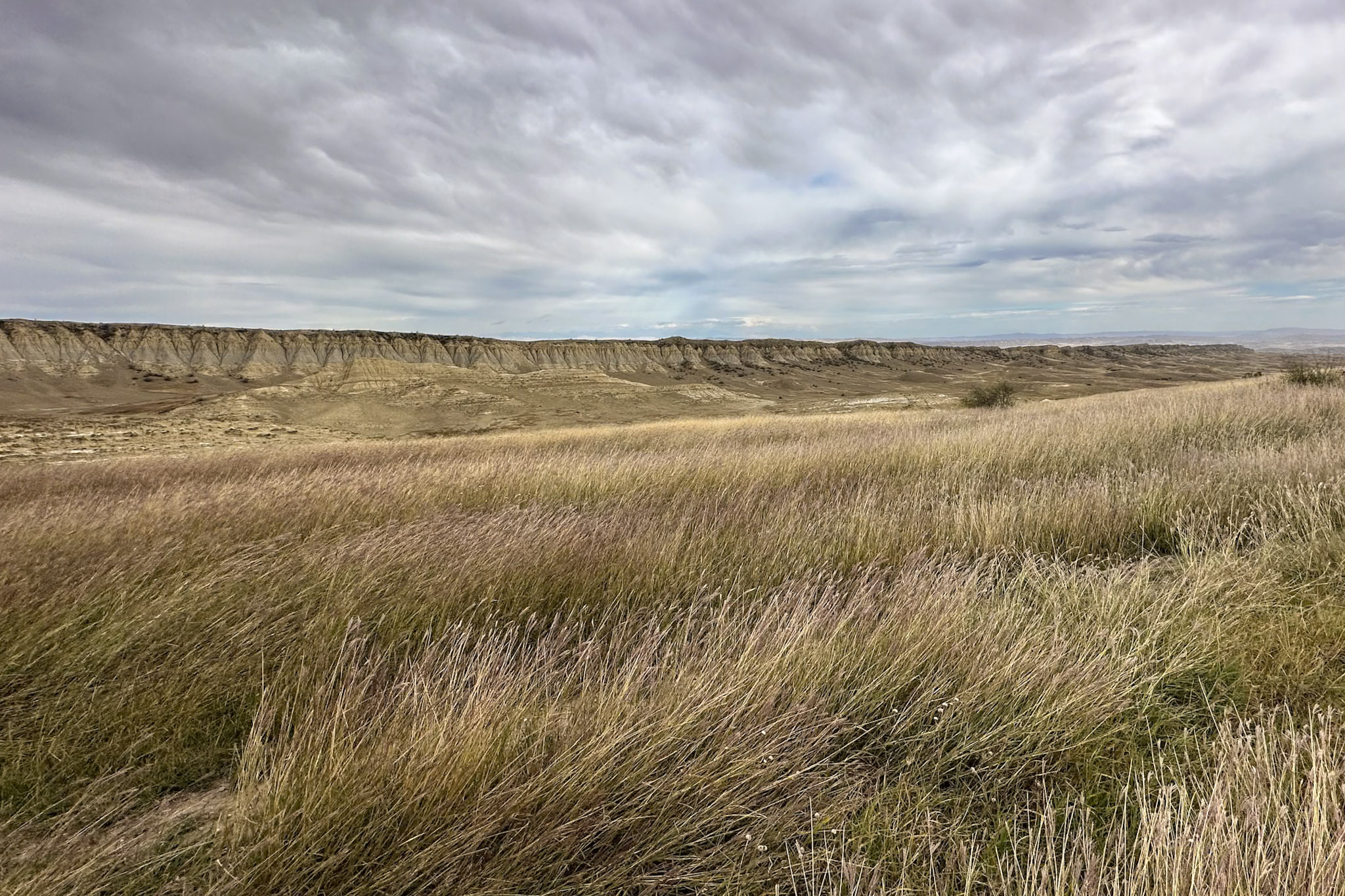
Fields of grass. Courtesy of Lauren Mowery.
I’d come to Sabereebi as part of a two-day journey with Living Roots Travel, the ecotourism arm of Georgia’s celebrated natural winemaker, Pheasant’s Tears. On the first day, before heading toward the borderlands, my guides eased me into the pace of the trip — a morning hike in Eagle Canyon, where griffon vultures and black storks glided on thermals over a limestone gorge, followed by another hike to Khornabuji Fortress, a 5th-century fortress perched on a rock outcrop with sweeping views of the Alazani Valley. An afternoon tasting of John Wurderman’s wines in Sighnaghi wrapped up the day.
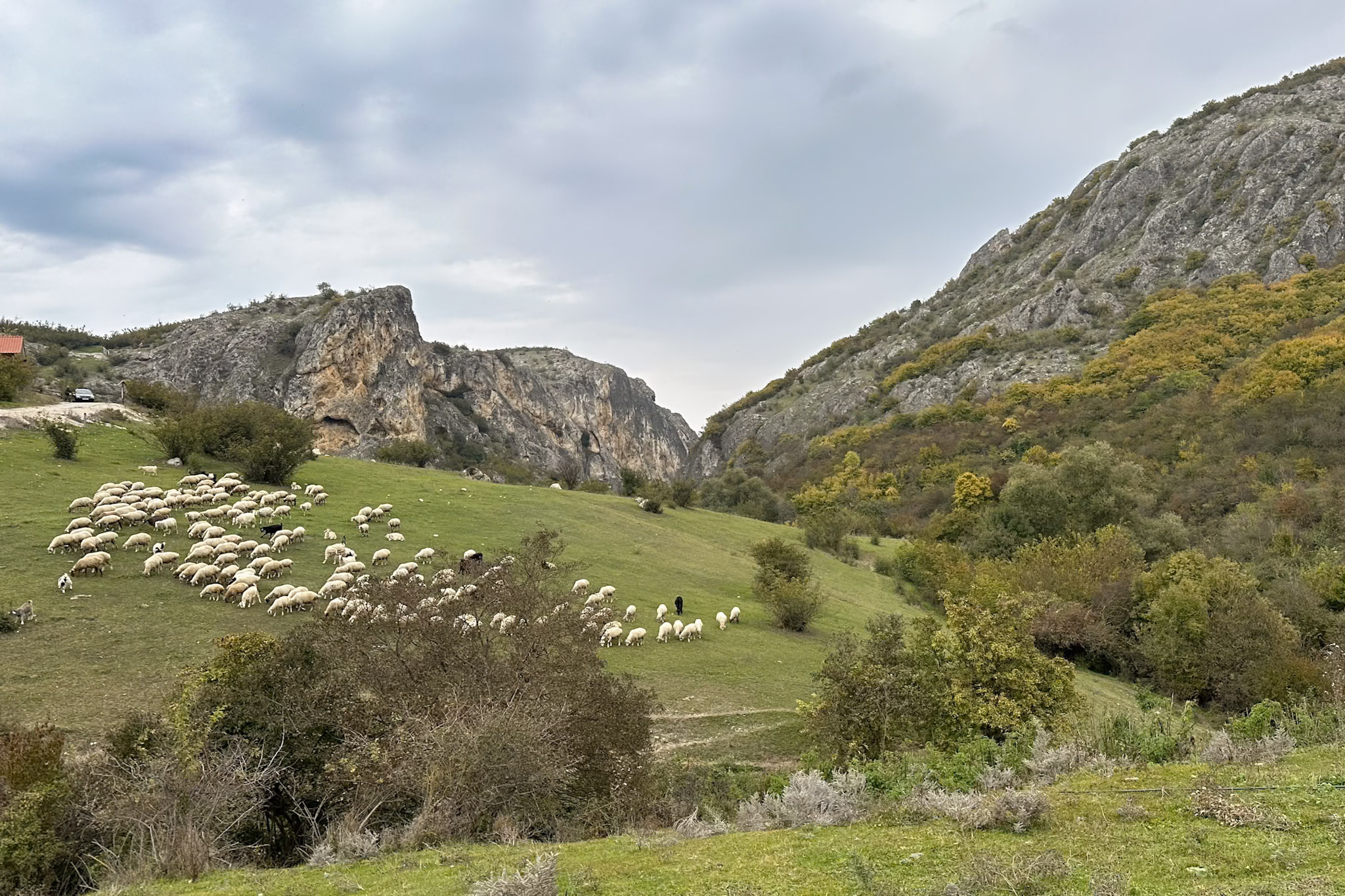
Sheep outside Eagle Canyon. Courtesy of Lauren Mowery.
By late afternoon, we reached Lost Ridge Inn, Brewery & Ranch, Living Roots’ eco-property in the hills just outside of town. Horses grazed in the paddock, while the master brewer set up a communal table for a sunset beer tasting. The air carried the twin scents of pine and woodsmoke as the warmth of the day gave way to an autumn bite.
After a few drinks, the group moved into the small, cozy dining room where dinner unfolded in slow Georgian fashion: khachapuri oozing with cheese, khinkali dumplings heavy with broth, and ritualistic toasts that stretched on between courses. Then the singing began. Several men from a traveling choir released polyphonic harmonies so resonant they seemed to vibrate between the beams of the room. The melodies shifted from joyous to mournful, wrapping the meal in something far older than any of us at the table.
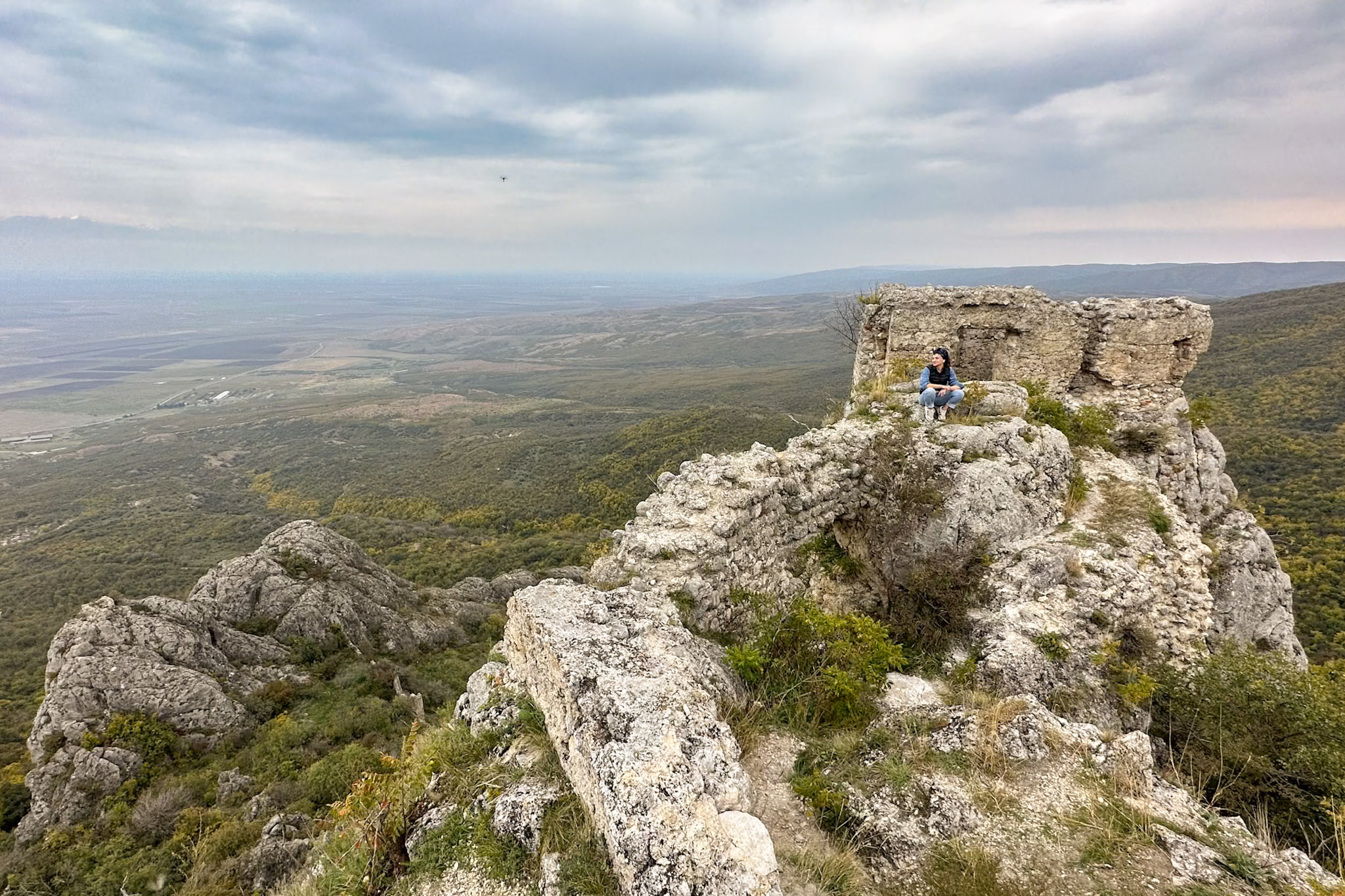
Hiking with Living Roots. Courtesy of Lauren Mowery.
The next morning, my guides suggested a trip into the hinterland of eastern Kakheti. Without knowing what that meant, but always game for an adventure, I agreed. We set out in a 4WD, our driver focused on navigating both road and rock. We passed young men on horseback, their sheepdogs eyeing us warily. The open steppes faded from green to ochre, then to rust and gold. Solitary farms anchored by stone huts and tin sheds appeared across the undulating hills — mostly homesteaders surviving in desolate stretches of land.
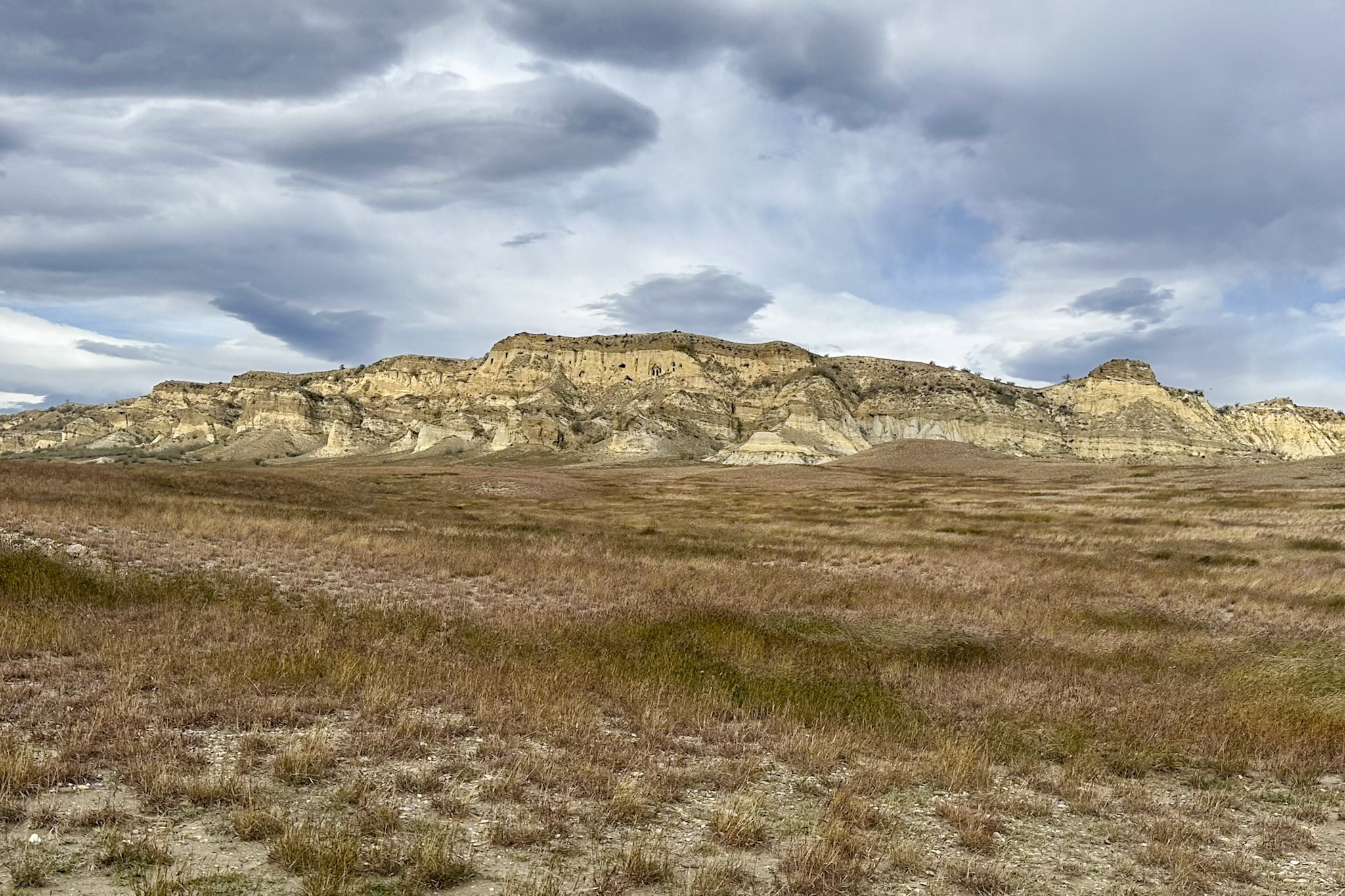
Caves appear as shadows in the sandstone. Courtesy of Lauren Mowery.
The sedimentary bluffs emerged from the windswept plains without warning, their monastic caves just shadows in the cliff face. To access them was to know the place. Fortunately, my guides had been there — once. Otherwise, there was no marked trail, no handrails to aid the unsteady tourist. Just steep slopes of loose rock that required trust in your hands and feet — and sturdy shoes capable of finding purchase. The climb demanded focus, but at the top came a rare exhilaration — murals untouched by restoration, their faded hues still visible in the light spilling through the entrance.
Sabereebi, ‘the place of the monks,’ spans a cluster of 9th-century chambers carved into sandstone mesas near Azerbaijan. The paintings are among Georgia’s rarest, created during an era when Byzantine iconoclasm was erasing sacred imagery elsewhere. Here, they survived: peacocks in copper blues, archangels with gold halos, and Christ in Judgment on a throne. Some walls bear lines of old Georgian script — thought to be prayers or signatures from the monks who painted them.
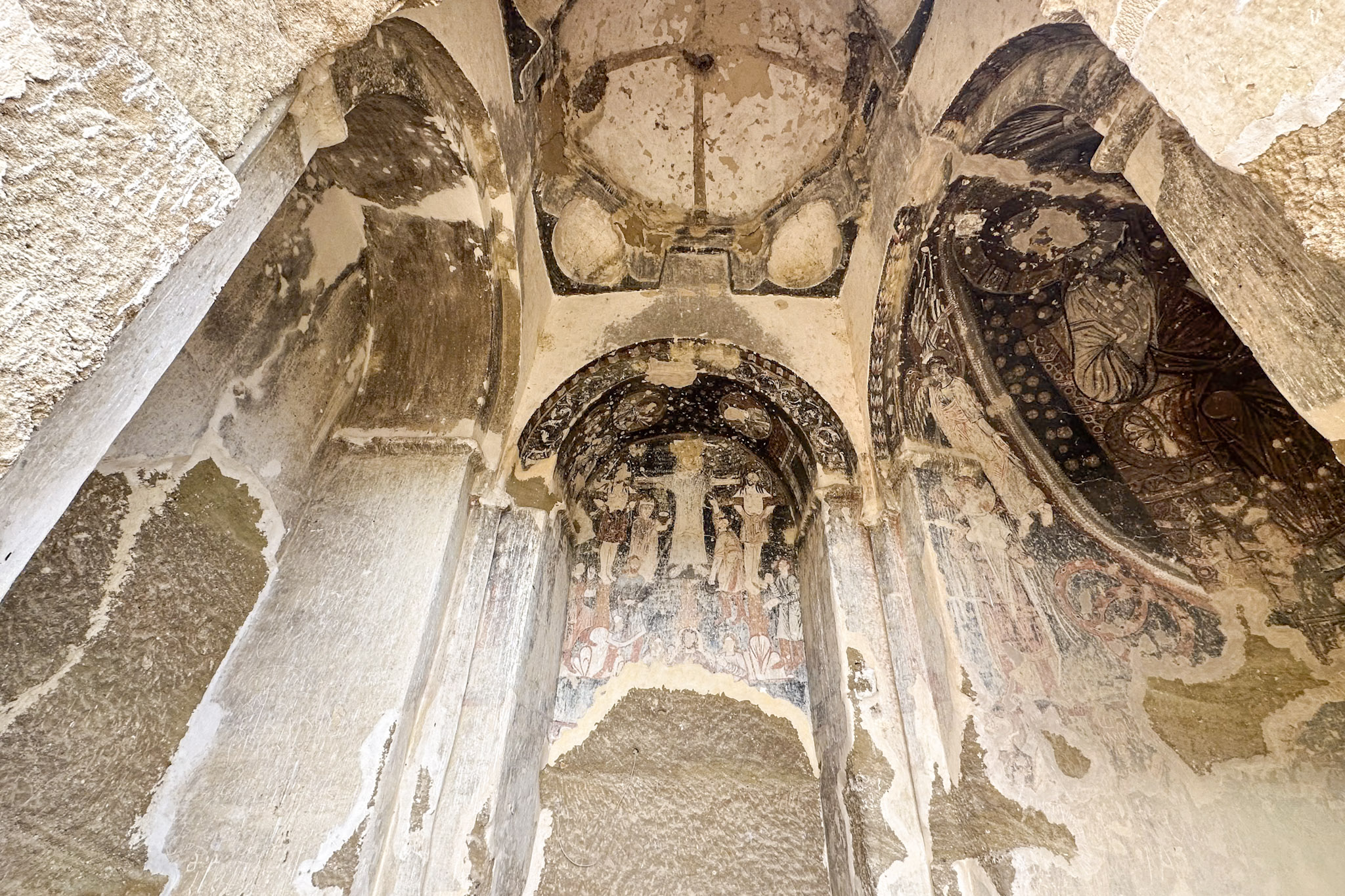
Incredible frescoes in the caves. Courtesy of Lauren Mowery.
The monks likely chose this place for its isolation. The cliffs became their cells, chapels, and refectories. The remoteness offered protection, not just from political turmoil but from everyday distraction. Life was austere: water was carried up from the valley, provisions were foraged or traded, and prayers marked the hours in lieu of bells. The very isolation that made survival difficult also guarded their iconography from the reach of empires. Abandoning the vast scrubland helped, too.
Historians believe the monks deserted Sabereebi after the Seljuk invasions of the 1060s, though some argue the site endured until suffering Mongol destruction around 1265 — meaning it was likely unoccupied before Georgia’s Golden Age in the late 11th to 12th century.
I savored a moment of quietude that felt absolute. No cell service. No people. No light pollution. And nobody, I realized, who knew where in the world I was.
We toured a few caves with our hands tucked in our pockets, careful not to touch the walls. The fragility of the site weighed on me — perhaps we shouldn’t be here at all — but the thought passed as we scrambled back down the mountain to the car. Another dilemma soon presented itself.
We could retrace the long way we came, or take what my guides called a ‘road less traveled.’ On the GPS, it showed as little more than a faint line along the Azerbaijan border, with the assumption that if we stayed on the Georgian side, we would eventually reach pavement.
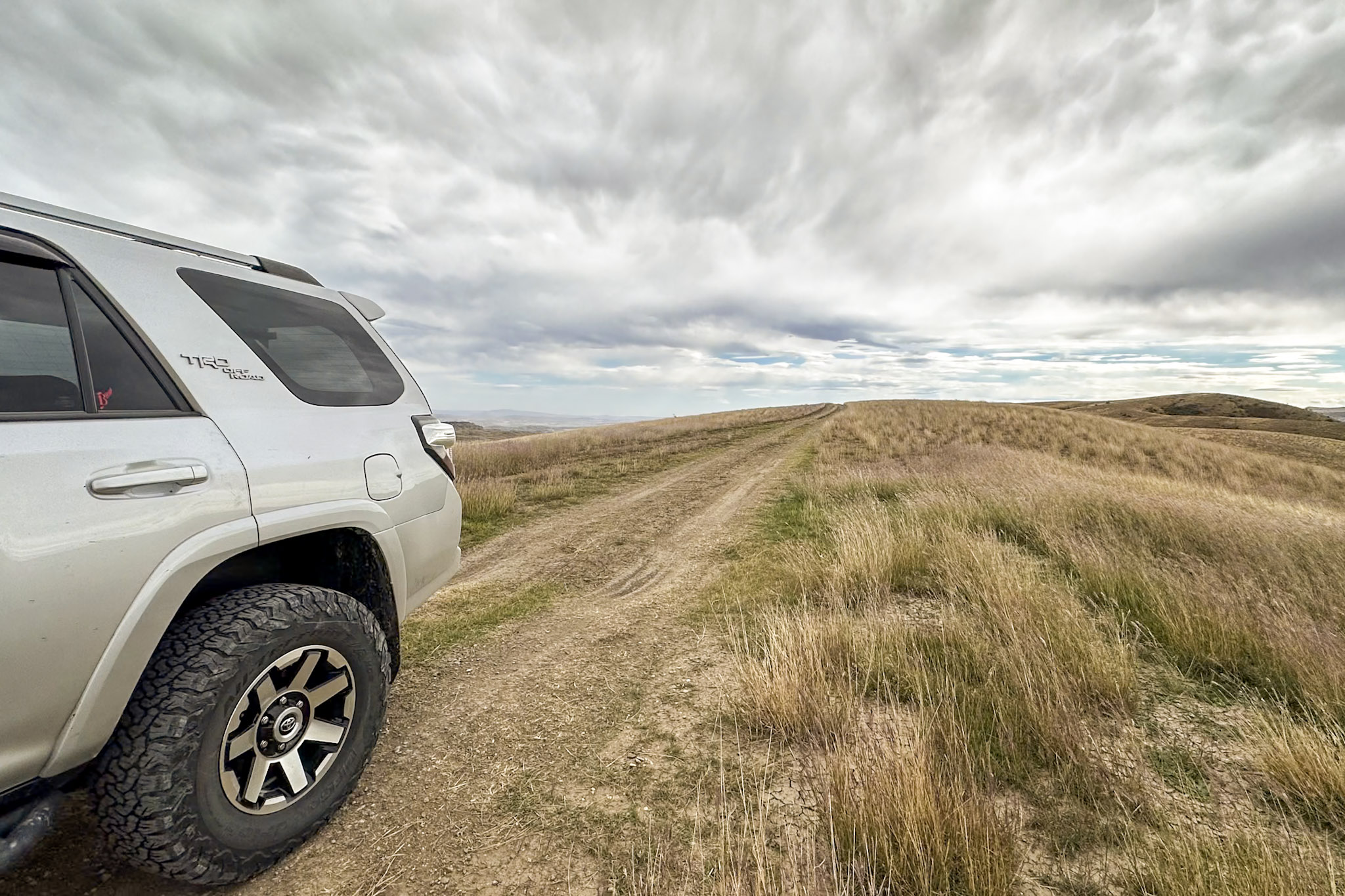
4WD required. Courtesy of Lauren Mowery.
We drove over hill after hill. At each crest, I hoped for a glimpse of lights or a sign of the civilization I’d happily rejected back in the quiet of the caves. Soon, the dirt track faded into a thin strip of bent grass; then grass gave way to boulders as all semblance of a path disappeared. The sun sank lower. GPS reception vanished. The fuel gauge dropped. I wondered how long we’d drive before we’d have to sleep in the car.
Panic crept in. My heart fluttered, then thumped. I inhaled slowly and deeply and contemplated the situation. It would be cold, but four warm bodies could survive the night, right? Even the driver, confident across the two-day trip, looked shaken. He stopped the car, got out, and looked around. He took a moment to curse the sky before returning to the wheel. But I trusted his driving completely. He’d find a way.
Eventually, we turned back toward one of the remote farms we’d passed 40 minutes earlier. If the lone Azerbaijani farmer didn’t speak Georgian — one of the guides murmured — we’d have a problem. Silence enveloped the car. As we approached, the driver hissed at me to roll up my window. A dog looking as rabid as Cujo raced at the vehicle, barking ferociously.
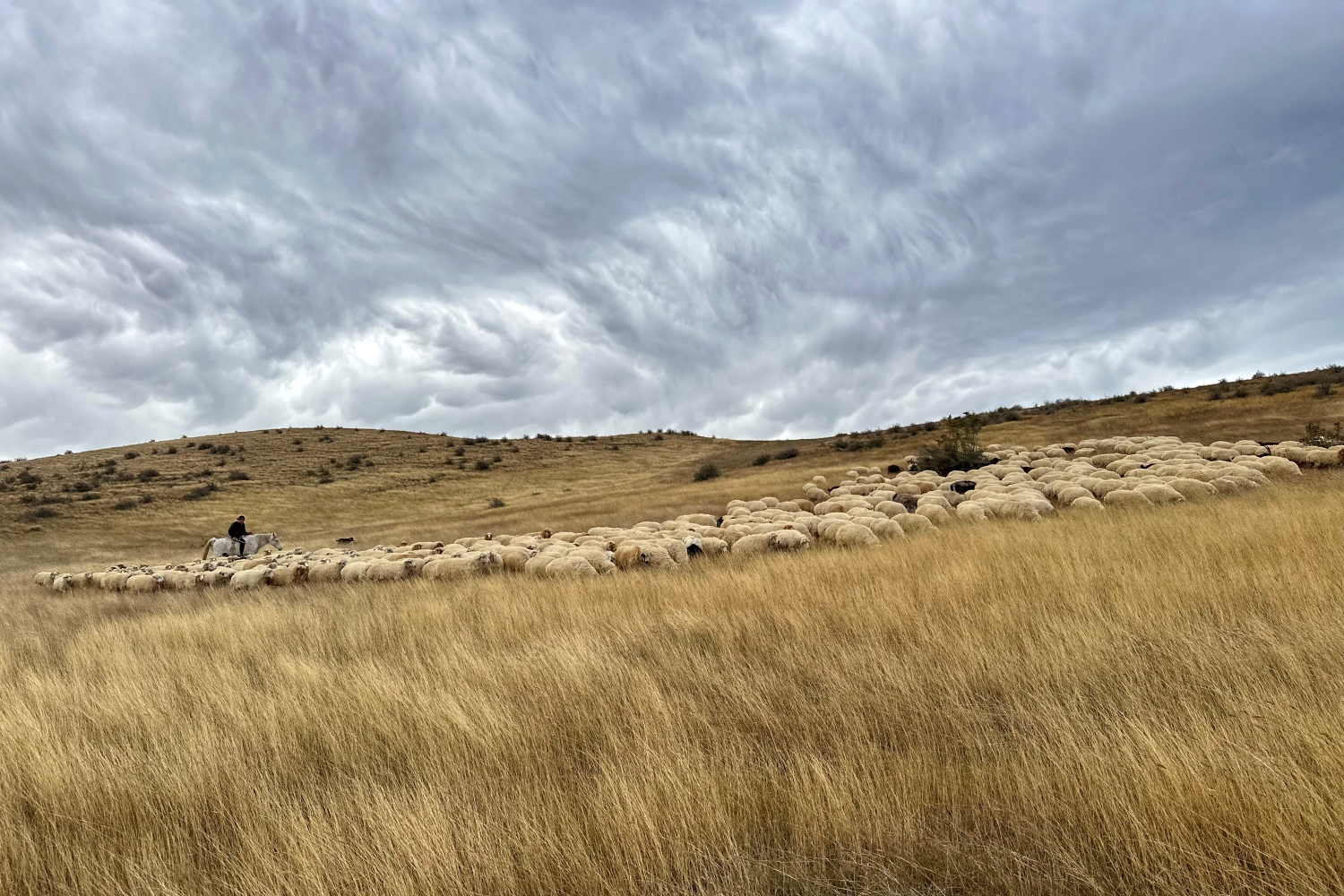
A sheep herder near the Azerbaijan border. Courtesy of Lauren Mowery
A stooped man in a worn gray robe emerged from the house. He shushed his four-legged guard as he approached the driver’s window. We held our breath until he uttered his first sentence — in Georgian. A collective sigh followed as he pointed toward more hills, in a direction that would supposedly lead us back to asphalt. It did, another 45 minutes later.
We saw the faint outline of buildings and cheered. A crumbling city, the remnants of a Soviet project, looked like utopia. We stopped for gas and guzzled cold beers with gratitude. An hour later, the day’s tension dissolved in the warmth of a natural winemaker’s home, where pork skewers sizzled in the fireplace, fresh bread and tangy local cheese filled the table, and unlabeled bottles of amber wine made endless rounds. Conversation spilled into more laughter while the room filled with the aroma of roasting meat.
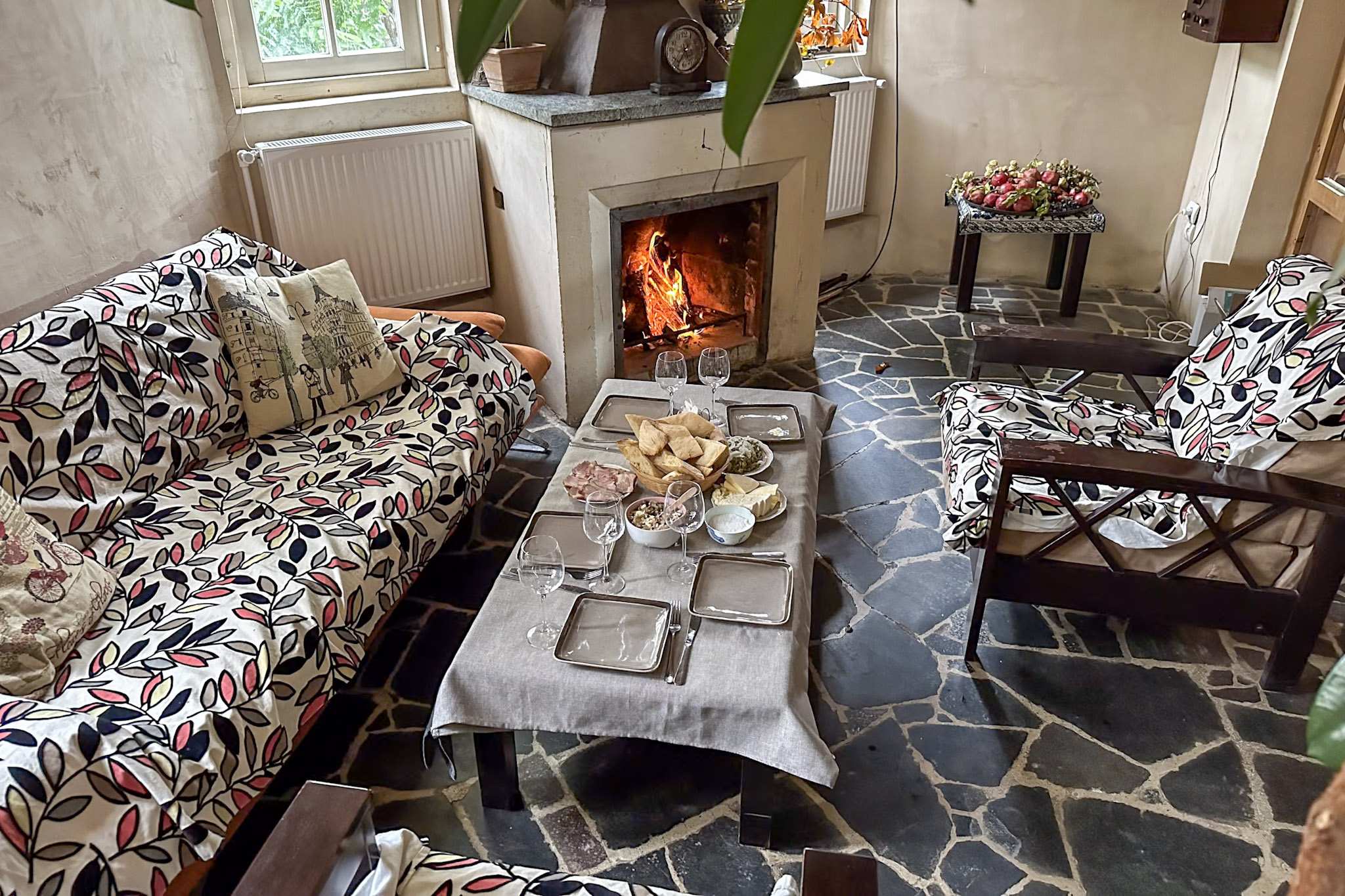
Living room of local winemaker. Courtesy of Lauren Mowery.
A few more hours later, I checked into The Stamba Hotel in Tbilisi — a modern boutique lit up like a beacon, with hot water, steady heat, and the easy hum of electricity. I poured a glass of Saperavi, collapsed on the bed, and smiled. I was glad to have gone — and just as glad to be back.
How to Book
To book a stay, tasting, or tour, visit Living Roots Travel.
Disclosure
I was a media guest of Living Roots Travel. My guides understood that I welcomed more spontaneous, off-route exploration than the average client, and I agreed to each detour in advance. At no point did I feel unsafe in their care. They treated the sites with the utmost respect, fully aware of the fragility of these rare treasures.
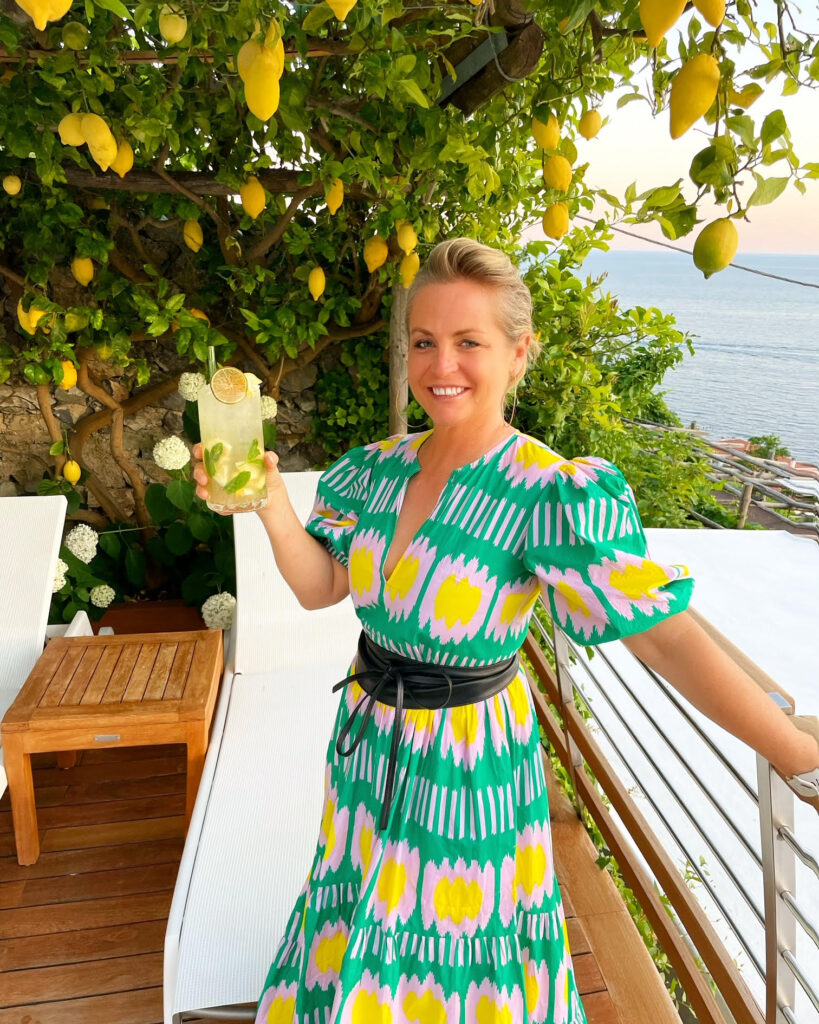
Founder and CEO of Azure Road, Lauren Mowery is a longtime wine, food, and travel writer. Mowery continues to serve on Decanter Magazine’s 12-strong US editorial team. Prior to joining Decanter, she spent five years as the travel editor at Wine Enthusiast. Mowery has earned accolades for her writing and photography, having contributed travel, drinks, food, and sustainability content to publications like Food & Wine, Forbes, Afar, The Independent, Saveur, Hemispheres, U.S. News & World Report, SCUBA Diving, Plate, Chef & Restaurant, Hotels Above Par, AAA, Fodors.com, Lonely Planet, USA Today, Men’s Journal, and Time Out, among others.
Pursuing her Master of Wine certification, she has also been a regular wine and spirits writer for Tasting Panel, Somm Journal, VinePair, Punch, and SevenFifty Daily. Mowery is a graduate of the University of Virginia and Fordham Law School, and she completed two wine harvests in South Africa.
Follow her on Instagram @AzureRoad and TikTok @AzureRoad
North Stars: Community Support, Heritage Value, Waste Management


